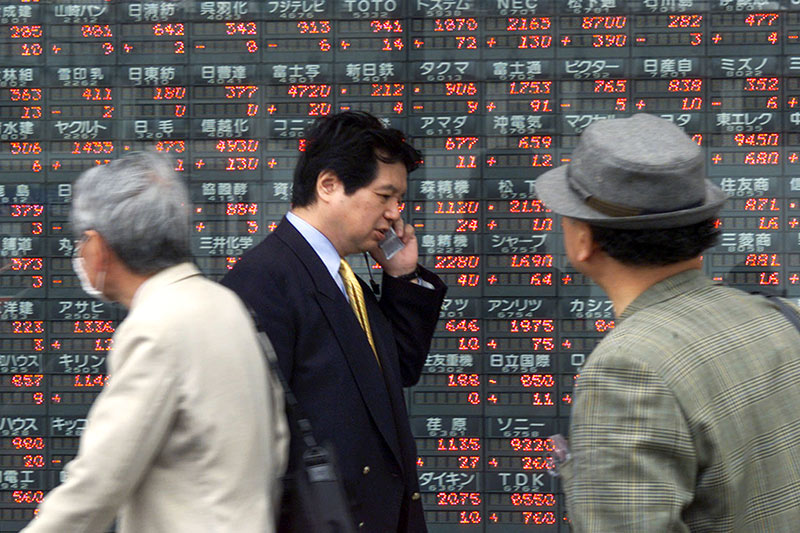(Bloomberg) -- The sell-off that struck the U.S. overnight ripped through Asian stock markets Thursday, with indexes in Japan and Hong Kong tumbling at least 3 percent.
All stocks listed on the Nikkei 225 Stock Average retreated, while Japan’s Topix index headed for its steepest decline since March. The Hang Seng Index and China’s Shanghai Composite fell more than 3 percent each. Taiwan’s Taiex index led the rout with a 5.6 percent slump.
The MSCI Asia Pacific Index headed for its worst day since February, with the measure sliding 3.1 percent. Turbulence spiked in Asian markets as the Nikkei Stock Average Volatility Index surged 45 percent.
"It’s just a beginning,” Banny Lam, head of research at CEB International Investment Corp., said by phone. “The U.S. tech bubble may take a while to burst and we are facing many external uncertainties - trade wars, risks in emerging markets currencies and oil price. And people should also watch yuan closely."
The regional benchmark gauge has slumped 12 percent this year as uncertainties such as the U.S.-China trade war weigh on investor sentiment. The Shanghai Composite Index has lost 20 percent in 2018, while Japan’s Topix is down 6.4 percent.
The S&P 500 Index sank 3.3 percent on Wednesday for its biggest drop since February, while the Nasdaq 100 Index tumbled 4.4 percent, setting the tone for a day of losses in Asian equity markets.
“The sharp selloff in the U.S. likely caught no-one by surprise,” said Paras Anand, head of asset management for Asia Pacific at Fidelity International. “If anything, market participants have been wondering how, in the face of tighter money, a tighter labor market and rising oil prices, the U.S. has continued to be so resilient.”
Investors are turning their attention to Chinese trade data due Friday for a read on whether the trade dispute is seeping through in the data. They’ll also be keeping an eye on inflation data scheduled for Thursday in the U.S.
“Asia is like a leveraged play on the U.S. market and the global trade situation right now, that’s not going to change until a deal is reached between the two largest economies in the world,” said Olivier d’Assier, head of applied research for the Asia-Pacific region at Axioma. For emerging markets, “the trifecta of a falling U.S. market, higher U.S. interest rates, and a stronger dollar is a deadly combination so they are likely to remain under pressure.”
Here’s what investors and analysts are saying about the selloff:
Going to Get Worse
“I think this is going to get worse before getting better,” said Nader Naeimi, head of dynamic markets at AMP Capital Investors Ltd. “We are not buying the dip yet. We are staying with our core value positions including energy and banks, but have significant cash buffers and significant long the Japanese yen.”
“We believe that ongoing structural deterioration in U.S.-China relations is likely to result in higher volatility in Asia going forward,” said Ross Cameron, head of the Japan office at Northcape Capital Ltd. “Volatility should be positive for active investors and stock pickers, as more opportunities arise to buy undervalued companies.”
Mixed Earnings Outlook
“The latest drop is reminiscent of February’s selling, which saw its recovery assisted by positive earnings results,” said Jingyi Pan, a market strategist at IG Asia Pte. “As for the upcoming earnings season commencing with major U.S. banks on Friday, the outlook is rather mixed thus adding to the uncertainty. It will be one worth watching for aid to the market given the proximity and it will be difficult to rule out further decline in the market absent positive factors.”
No Crisis
“We haven’t reached a crisis scenario,” said Lam of CEB International. “After all, corporate fundamentals are not that bad. It’s all because of these external uncertainties. Yes the economic data - especially from China -- may show some slowdown in the near future but the situation is still far away from a hopeless crisis.”
